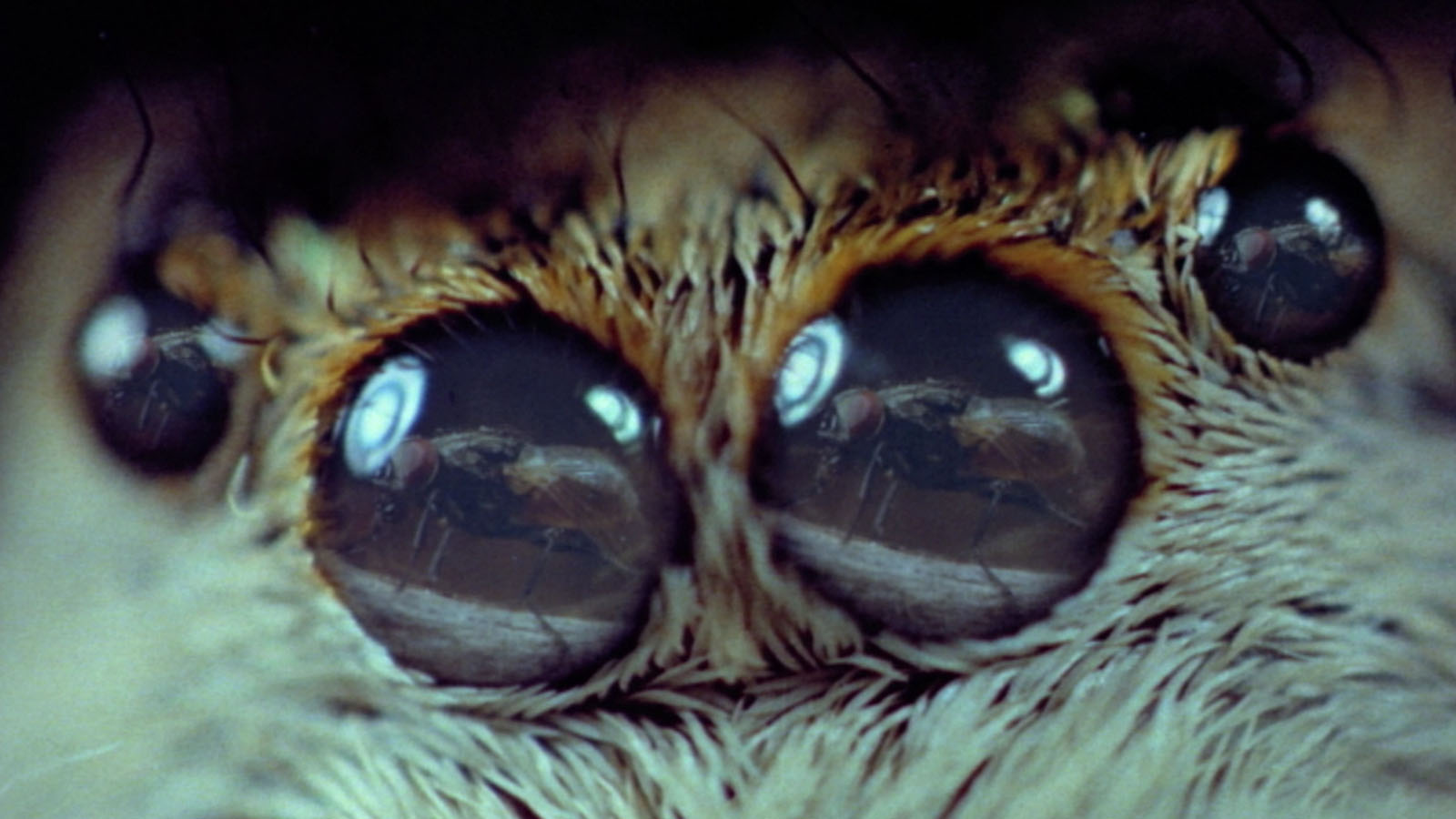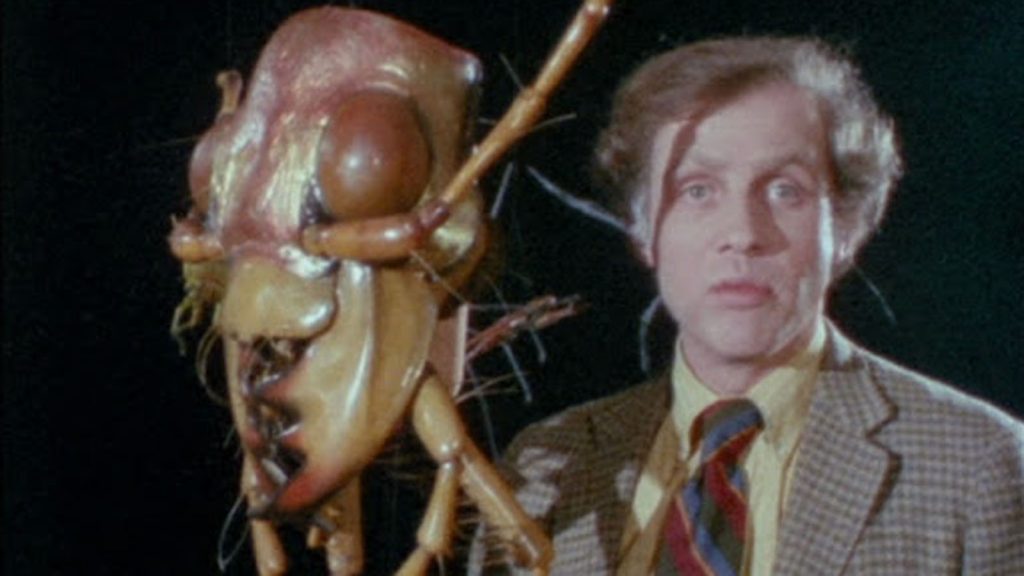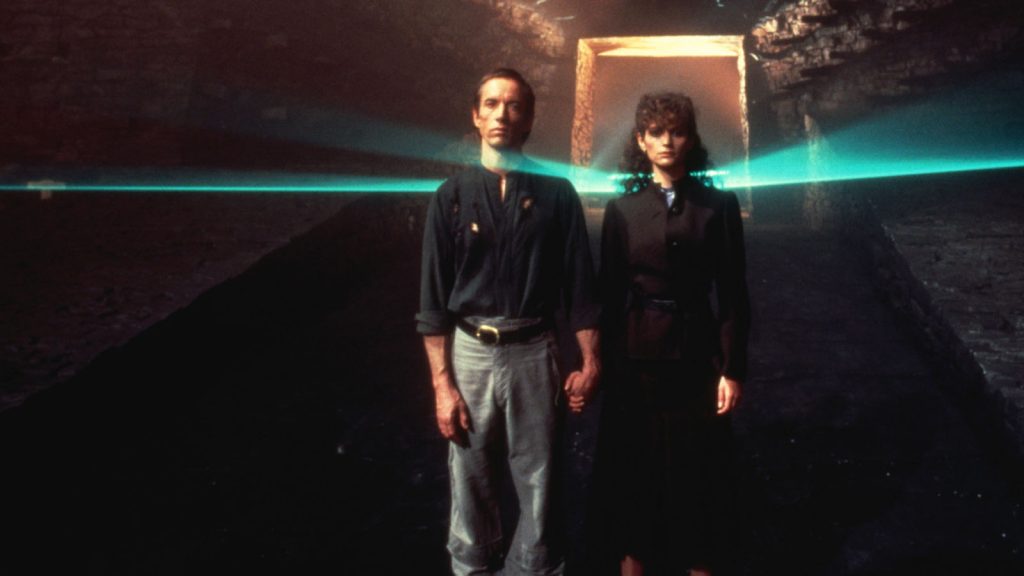
Insects are the worst kind of people. With all the venom-pumping, eye-gouging, and cannibalism, it’s a wonder they get around to maintaining our delicate ecosystem. Dr. Nils Hellstrom, fictional entomologist, is here to tell us that they mean to kill us, or simply wait until we kill ourselves. The Hellstrom Chronicle (1971) is a weird blend of apocalyptic horror and wildlife documentary, using spectacular time-lapse and macro photography to capture the violent, dead-end lives of bugs while narrator Hellstrom spins episodes of termite war, ant depredation, and camp spider performance into a comprehensive story regarding humanity’s failure to match the insect’s ability to cooperate. It’s a concept creepily developed three years later (featuring work from the same cinematographer Ken Middleham) in Saul Bass’s Phase IV, that insectile Childhood’s End in which humanity levels up to join the hive mind. But according to Hellstrom, we are already on our deathbed, and no one is coming to save us.
Had H.P. Lovecraft written the script for a nature documentary, it might’ve looked like The Hellstrom Chronicle, where natural selection as it pertains to the insect is described as “transforming him into specters as limitless as the imagination of the insane.” David Attenborough this is not. The actual screenwriter is David Seltzer, who would go on to write The Omen (1978) and Prophecy (1979), and one of the directors is Walon Green, who co-wrote the screenplay for The Wild Bunch (1969), and one suspects their tongues are planted firmly in cheek, to take nothing away from the film’s more disturbing moments. Lawrence Pressman gives an endearingly stagey performance as Hellstrom, the donnish paranoiac who delivers his lines with a sharp intake of breath, the sky-searching eyes, the trembling voice—dropping zingers like this final judgment of the insect: “Let it now be known. He has no soul.”
Watching this movie is singularly strange and gratifying: years of high-definition nature documentaries do not prepare one for the palpable pleasures of ’70s macro photography. The film grain is gorgeous, and the eye-wateringly shallow focus makes insect bodies pop out against an impressionist swirl of green and golden light. Add to that a seductive and sometimes harrowing soundtrack from Lalo Schifrin: in one particular scene, he lays on the Penderecki strings—auditioning his later work for The Amityville Horror—in a threnody for the honey bee caught in the sticky hairs of a cobra plant, dragged down slowly to its death. And even as you sit there on your couch, the hot and echoey sound design that depicts a black ant slurping a bead of water or a Jerusalem cricket gnawing an enemy’s exoskeleton will make you feel like you’re sitting in the back seats of a near-empty ’70s grindhouse.
Before you dismiss The Hellstrom Chronicle as a bit of ’70s marginalia, know that it beat out Marcel Ophuls’s The Sorrow and the Pity to win the Academy Award for Best Documentary in 1972. Certainly, the technical achievement of the photography had something to do with it, but there is something too about the mixture of paranoia and hopelessness that may have struck a chord in America, still fighting the war in Vietnam. Fans of New Hollywood and horror classics like The Texas Chain Saw Massacre (1974) will know the style: ragged experimentation, black unguarded humor, and a sense of impending hysteria. In light of the recent decline in global insect populations, the movie may bring a nostalgic tear to the eye for a decade when we could imagine the catalogue of possible human extinction events might include annihilation by bug. Maybe we’re better off. After seeing what these bloodthirsty insects can do—viewers who judge a horror film by the quality of its “kills” will be in heaven—you’ll be begging for a nice slow heat death.

a writer living outside Philadelphia, is currently working on a horror project set in western Pennsylvania. He co-wrote the movie Anamorph, starring Willem Dafoe.
Item 1 on my list of demands to be met before returning to regular Mass on Sundays is the canonization of Ken Russell.
BY TOM PHELAN | January 5, 2024
The horrible miracle of John Carpenter’s The Thing is that it manages to absolutely terrify the viewer while also being patently, grotesquely absurd. A commonly held belief about horror cinema is “the less shown the better”...
BY MICHAEL KORESKY | October 31, 2021
It’s an unfortunate fact of life: even super-smart women sometimes end up with terrible boyfriends. This, along with a very different tragic, universal reality—everyone’s body radically changes and deteriorates with illness...
BY VIOLET LUCCA | October 31, 2022

This pre-Code offering packs a lot of story into its typically brisk running time, with several plot threads weaving together a (not always successful) tapestry of spooky and criminal doings.
READ MORE >
BY ANN OLSSON | Month 00, 2021

In what could be the fastest-resulting rape revenge movie, a drunken lout brutally forces himself on Ida, the young woman who doesn't return his affections, during a party over Labor Day.
READ MORE >
BY LAURA KERN | Month 00, 2021

Beast is a lot of movies in one package - fractured fairy tale, belated-coming-of-age story, psychological drama, regional horror film - but above all it's a calling card for its leading lady, Jessie Buckley.
READ MORE >
BY LAURA KERN | Month 00, 2021